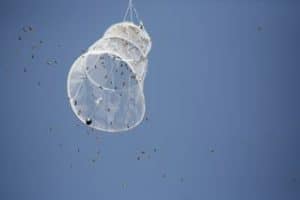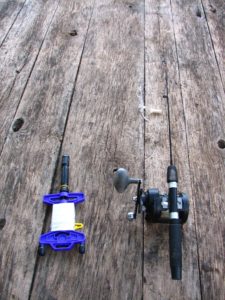
Last week, Jody Gerdts and Maggie Shanahan went fishing for drones. Drones and queens mate generally over 60 feet up in the air. Drones gather in specific spots, queens fly by, and the drones chase her. The ones that catch-up get to mate. These drone congregation areas are sometimes even in the same from year-to-year. Some of the books say drones and queens fly different distances away from the hive to prevent inbreeding. However, after talking to beekeepers that have seen the drone congregation areas I am unsure if the distances are true. I have talked to beekeepers that have seen congregation areas much close to the apiary and speculate that both the queens and drones go to the same site. There is even one really neat beekeeper in Australia, Joe Horner, who controls his bees so they mate later in the evening when other drones and virgins have gone back to their colonies as a way to control matings. He knows exactly where they mate and the virgins and drones from the same yard fly to the same spot.
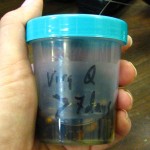
This a phenomenon you can test if you round-up a large balloon (at least 14”) filled with helium, a long and sturdy string, a way to wind the string, and a queen pheromone lure. We use a fishing rod and line as the string since it makes
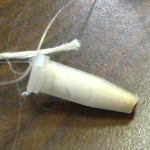
releasing and re-calling balloon easier, but you can use really anything that winds string (like kite string – see picture). For the pheromone lure, we keep a jar of alcohol around that we toss dead virgin queens in, and soak a cotton ball with the alcohol. We stick the cotton ball in a tube with the bottom cut off to prevent the alcohol from evaporating too rapidly (see picture), but you can use whatever you have around, like saran wrap.
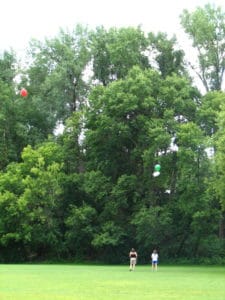
Once your supplies are ready, tie the balloon to the string or fishing line, tie the lure about 10 feet below the balloon, the go outside and release the balloon so it is about 60-70 feet in the air. Drone congregation areas tend to be at ends of tree lines, by streams, or ends of other landscape byways. Wander around while listening and looking for drones. Go out about 2pm when drones are active, and only on nice days with little wind. You can check to see if drones are flying by watching the entrances of your colonies.
Of course the drones you see aren’t necessarily from your colonies. To figure this out, you can put a small dab of paint the older drones in your colonies (check to see if they are “buzzy”) with modeling paint (we use testors), and go try to find them. You can make a light, bell-shaped cage with the lure in the top to attract the drones (see picture). When you find the congregation area, the drones will fly in and most will not fly out. You can lower your trap and check it out. I’ve never got to do the trap but it looks like lots of fun. (The last two photos are from Marla Spivak.)
